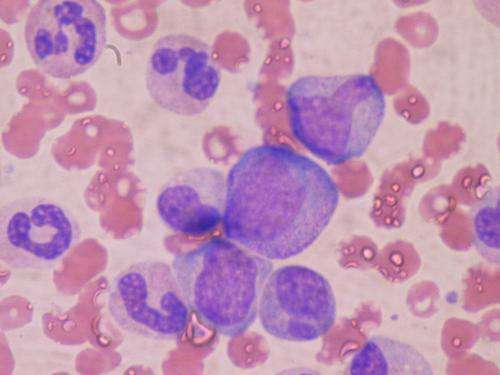
New research presented this week at ACR Convergence, the American College of Rheumatology’s annual meeting, shows a relationship between genotype, bone marrow failure and survival in patients with the rare autoinflammatory disease VEXAS syndrome, which was only identified in 2020.
VEXAS, an acronym for vacuoles, E1 enzyme, X-linked, autoinflammatory and somatic syndrome, is a newly defined, adult-onset genetic disease that typically affects males. VEXAS is caused by a mutation in the UBA1 gene that is responsible for the ubiquitin-activating enzyme. VEXAS causes inflamed myeloid blood cells and a variety of clinical symptoms that resemble those of other diseases.
This new study provides important clues to predict survival and mortality in people with VEXAS syndrome. These factors, which have not been defined previously, could help guide physicians as they manage patients with this new disease.
“Our interest in conducting this study was driven by the high mortality found in these patients with VEXAS syndrome. We wanted to identify clinical features that predict survival to understand the natural history of the disease and to guide management decisions,” says Marcela A. Ferrada, MD, a Lawrence Shulman Scholar at the National Institute of Arthritis and Musculoskeletal and Skin Diseases (NIAMS) and the study’s co-author. “We need to know more about VEXAS syndrome to understand its progression, complications and, most importantly, better ways to care and treat patients. At the moment, management of patients with VEXAS is heavily influenced by the stage of their disease. In the early phases of disease, patients struggle with inflammation. In the later phases, problems related to bone marrow failure tend to arise.”
The study included 73 patients with genetically confirmed VEXAS based on disease-associated variants in their UBA1 gene. Their median age at disease onset was 66, and patients ranged in age from 40 to 85. All were white males and had been treated with glucocorticoids. Before genetic testing confirmed that the patients had VEXAS, they had been misdiagnosed with other diseases, including 53% with relapsing polychondritis, 35% with myelodysplastic syndrome and 20% with Sweet syndrome.
Researchers estimated median survival rates for the patients, as well as compared differences in survival by genotype. They also identified associations between the patients’ clinical features, such as age at disease onset, thromboembolic disease and pulmonary infiltrates, as well as transfusion dependence, genotype and mortality. They also studied associations between patients’ genetic variants and UBA1b isoform expression.
Overall, they found patient mortality was 27%. Median survival age from onset of symptoms was 10 years. Death was more common in the 50% of study patients with the valine gene variant, compared with the 18% of patients with leucine and 22% with threonine variants respectively. Patients with the valine variant had a median survival of 9 years, significantly shorter than patients with other variants. Researchers also found two independent predictors of mortality: Having the valine variant and becoming blood transfusion-dependent both increased the risk of death for patients with VEXAS. No other clinical features were associated with mortality.
Given the high mortality rate and current lack of effective medical treatments for VEXAS syndrome, the study’s authors believe these patients should be considered for bone marrow transplantation, especially if they have other life-threatening risk factors, the study’s findings suggest.
Source: Read Full Article
